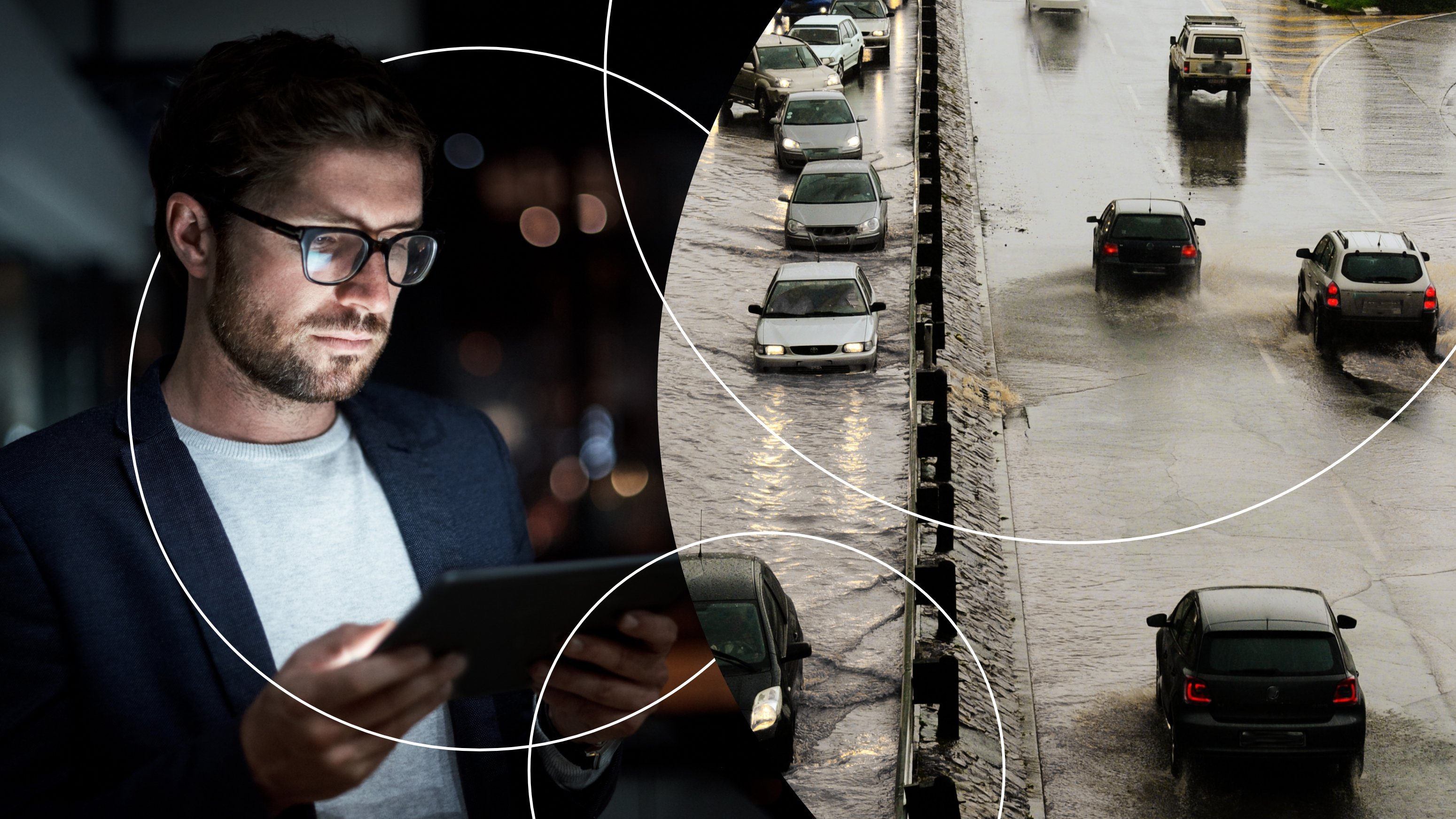
Volcanic eruptions
The earth’s ring of fire
properties.trackTitle
properties.trackSubtitle
>0
Volcanoes erupt every year
Around 550 volcanoes around the world are believed to be active
0+
Flights cancelled in 2010
after an ash cloud spread over Europe following the eruption of the Eyjafjallajökull volcano in Iceland
The most significant volcanic eruptions of recent decades
After a long period of quiet, several violent volcanic eruptions have recently highlighted the dangers. In September 2021, the Tajogaite volcano erupted on La Palma in the Cumbre Vieja mountain range in the south of the Canary Island. Huge lava flows and ash buried around 3,000 houses, and more than 7,000 people had to be evacuated. Losses were in the region of €850m.
In December 2021, Mount Seremu on the Indonesian island of Java erupted, causing pyroclastic flows – ash and rock at temperatures of around 1,000°C – which are considerably more dangerous than lava flows. More than 50 people were killed.
When it comes to volcanic eruptions, many people think of lava, mud and pyroclastic flows, glowing clouds, ash eruptions or ash deposits in the vicinity of the volcano. But the indirect impact can be felt worldwide.
Here are three examples:
- In the case of the largest volcanic eruption in recent decades, that of Pinatubo in 1991, huge amounts of sulphur dioxide penetrated into the upper atmosphere. As a result of the aerosols that formed, the average global temperature in the year following the eruption fell by 0.5°C – with enormous consequences for agricultural yields.
- Even when there is no serious property damage, ash clouds can paralyse air traffic across an entire continent. The reason for this is that soot and silicate particles can damage aircraft engines, with the result that air traffic needs to be shut down as a precaution. In 2010, well over 100,000 flights were cancelled after the Eyjafjallajökull volcano in Iceland erupted, spewing out enormous clouds of ash. The economic loss for the aviation sector ran into the billions.
- The highest ever ash cloud observed (35 km) formed in January 2022, when the Hunga Tonga volcano in the South Pacific island state of Tonga exploded. It was the most violent volcanic eruption since Pinatubo, and the bang was heard over 2,000 km away in New Zealand. Large parts of the island state were covered in a layer of ash several centimetres thick. Overall, losses were limited because the explosion happened far away from countries with conurbations.
What is a supervolcano?
Subterranean volcanoes without a cone – so-called supervolcanoes – are among the greatest of all natural hazards. Their gigantic magma chambers extend to depths of between 5 and 20 km. Any supervolcano eruption would have devastating consequences – both locally and globally. But supervolcanoes lie dormant for long periods – for tens to hundreds of thousands of years. In Europe there are two supervolcanoes: in the Eastern Mediterranean near the island of Kos, and the giant magma chamber beneath the Phlegraean Fields to the north of Naples, which extends as far as Vesuvius to the southeast of the city. Vesuvius itself erupts every 30 years or so. If there were an eruption on the scale of the one of 79 AD, the property damage today would amount to some US$ 40bn.
Volcanologists have become increasingly concerned since 2001, as the magma lake beneath Vesuvius extends to the Phlegraean Fields and is 400 km2 in size. More than three million people live in this region. This means that the Phlegraean Fields are likely to pose an even greater threat to Naples than Vesuvius itself. The last eruption of the Phlegraean Fields occurred 35,000 years ago and was gigantic: it ejected between 50 and 100 times as much material as the Pinatubo eruption of 1991.
It is believed there are also supervolcanoes under New Zealand, Kamchatka, the Philippines, the Andes, in Central America, the USA, Indonesia and Japan.
Roughly 500 million people live close to volcanoes around the world – the majority of them in cities. One such example is Auckland in New Zealand. The greatest danger there, however, is not from the small volcanoes in the urban area but from volcanoes – some of them highly explosive – situated some 200 km southeast and 260 km south of the city. Following an eruption, the principal danger would be from ash deposits. Despite efficient early warning systems, an evacuation would be an enormous logistical challenge – on a similar scale to Naples.
There is also a high risk for Japan’s most populous cities, such as Tokyo, Nagoya, Kyoto and Yokohama.
What are the consequences of volcanic eruptions?
0 km²
Size of the magma lake discovered 2001 under Vesuvius
Depending on its severity and nature, a volcanic eruption can have extreme consequences, such as:
- Direct damage, people killed or injured
- Devastation of coastal regions by tsunamis
- Shutdown of public life in large cities
- Impact on air and sea travel, with supply chain disruptions
- Crop failures – a layer of ash 1 cm thick is enough to wipe out a crop
- Global climate changes from the aerosol layers that are created after an eruption, which reflect a portion of solar radiation back into space, thus cooling temperatures
In principle, volcanic eruption is an insurable risk. Serious loss events are rare occurrences, and volcanoes like Vesuvius are closely monitored. Imminent eruptions of monitored volcanoes can often be predicted and people evacuated, but the strength and duration of an eruption is difficult to estimate.
These articles may also interest you:
Solutions for assessing and managing volcanic risks
Reinsurance solutions
Industrial solutions
Contact our experts









